With their delightfully cupped flowers and beautiful leaves, Tulips are the favorite spring flower of many home gardeners. These easy-to-grow plants are often cultivated in pots. These amazingly versatile plants are happy in both pots and borders. And some can also be naturalized to lawns and rockeries to create a fantastic display along with Snowdrops, Narcissi, and other spring delights. They are cheap and easy to grow with little knowledge, and they can transform the spring garden from drab to dramatic.
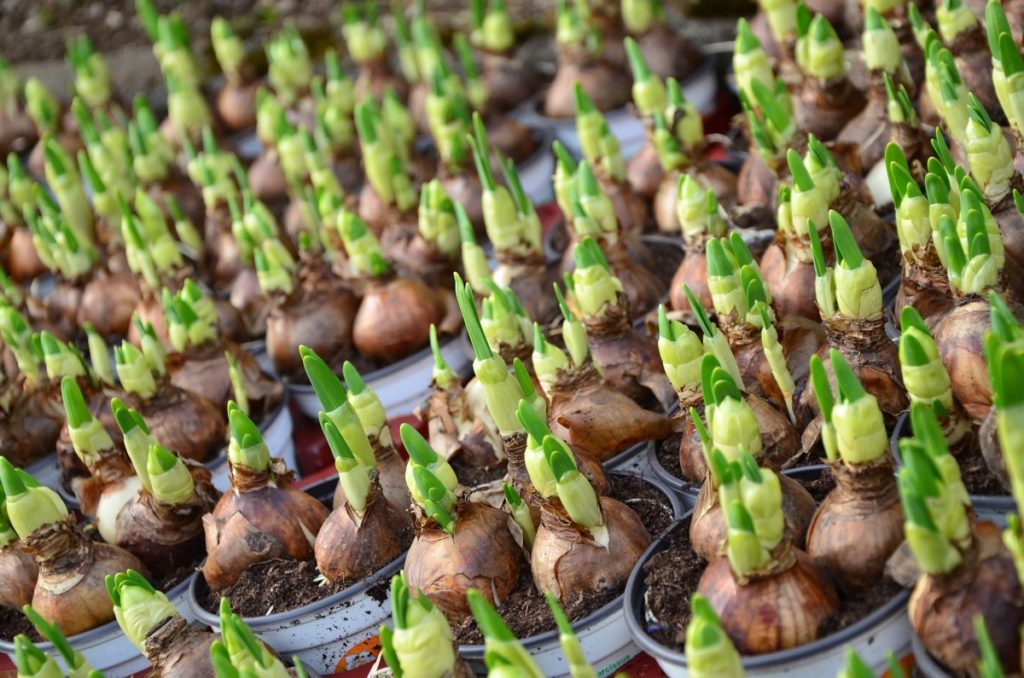
How to plant Tulips from bulbs
How long does it take Tulips to grow from bulbs?
- Tulips are the most colorful spring flowers. They’re also one of the easiest flowers you’ll ever grow. Plant the bulb in the fall for flowers in the following spring. Most Tulips require a cold period of at least 12 to 14 weeks to produce a beautiful flower. This makes it difficult, but not impossible, to grow Tulips in warm or tropical climates after bringing the plants to temperatures similar to spring. A flowering plant will then appear within 15 to 30 days.
- The blooming time after chilling varies by species. Tulip bulbs prefer 10 to 16 weeks of chilling and will sprout one to three weeks after the required period. Most modern Tulip cultivation blooms well for three to five years. Weak bulbs produce large, floppy leaves but not flowers.
How many Tulips do you get from 1 bulb?
- Some Tulip species produce more than one flower bud in the bulb, more than one, or side bulbs over time, but usually with one flower per bulb with Tulips. A Tulip bulb will produce one flower. Therefore, if 50 Tulip bulbs are planted, they should produce 50 flowers. Although Tulips traditionally produce one flower in each stalk, they send at least four stems per plant, achieving the maximum.
- Tulip bulbs produce only one flower per bulb per season. The duration of flowers varies from early to late spring and only lasts a few weeks before they are gone. Multiheaded Tulips are plants that make multiple flowers from the same bulb. Depending on the cultivar, one bulb can produce up to seven flowers. They are sometimes called multi-flowering or bouquet Tulips.
Growing Tulips in pots
- Tulips grow well in pots or containers and require very little maintenance. Thankfully, your bulbs will be acceptable to stay in your flower pot once they begin to bloom. Tulips are hardy plants that don’t require much space to take root once they grow. As a result, placing your bulbs in a big pot will give them enough space to flourish after they begin flowering.
- Ensuring the drainage in the container is excellent and water from melting snow or normal water does not get trapped to freeze will help keep your Tulip bulb alive in the winter. If you’ve put your Tulips in pots, you can expect them to last for at least several weeks and, at most several months. Tulips grow very well in pots. Fill half the container with peat-free, multipurpose compost and plant the bulbs at three times their depth, with a few centimeters between each.
- Tulip stays in a pot for 8-10 weeks before the flowers begin to wilt and die. The life of Tulip blooms depends on the variety and the climate in which you grow them. If the weather remains cool, they can survive for a few weeks.
In case you missed it: Growing Tulips Indoors from Seed in Pots, Containers
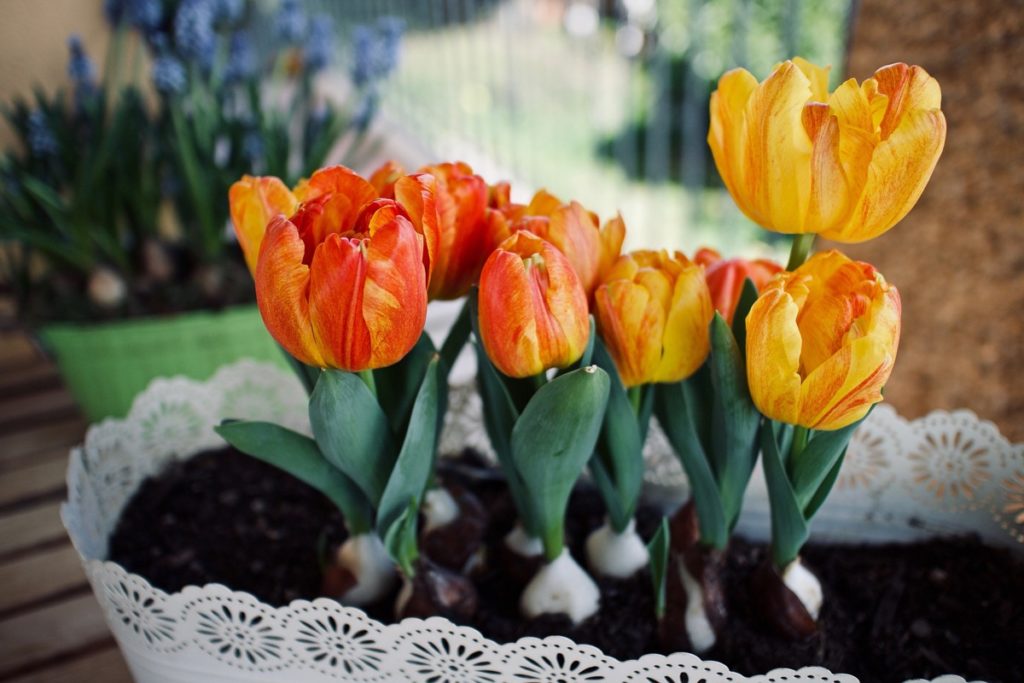
The best month to plant Tulips?
You should plant Tulip bulbs in the fall. Soil needs to be cooled from the summer growing season before planting, which can mean September in a cold climate, October in transitional climates, and November or December in warmer climates.
Do Tulips grow back every year?
Tulips are naturally perennials that come back year after year. However, in some situations, when they return, they are smaller and do not even bloom in their second or third years. This sometimes happens when they grow out of their natural climate. You can leave the bulbs in the ground and, left in place, bloom again the following year. Gardeners only dig Tulip bulbs when the plants seem less vigorous and offer fewer flowers, indicating overcrowding.
Harvesting and storing Tulip bulbs
- Plant the bulb in an area with bright sunlight and cool temperature. Let the leaves turn yellow and naturally die back. This process allows the bulb to store energy for next year’s development. Tulip bulbs can be stored out of the soil for up to 12 months, as long as conditions are appropriate. Before planting, You should check that they are firm and plump to the touch, not wilted and broken or soft and squidgy.
- After blooming, allow the plants to wilt, die back, and dig up the Tulips. Clean the soil and let the bulb dry. Dispose of any damaged ones. Place the bulbs in a net or paper bag. Label them and place them in a cool dark place before planting them again in the fall.
In case you missed it: 16 Common Tulip Plant Problems: How to Fix Them, Solutions, and Treatment
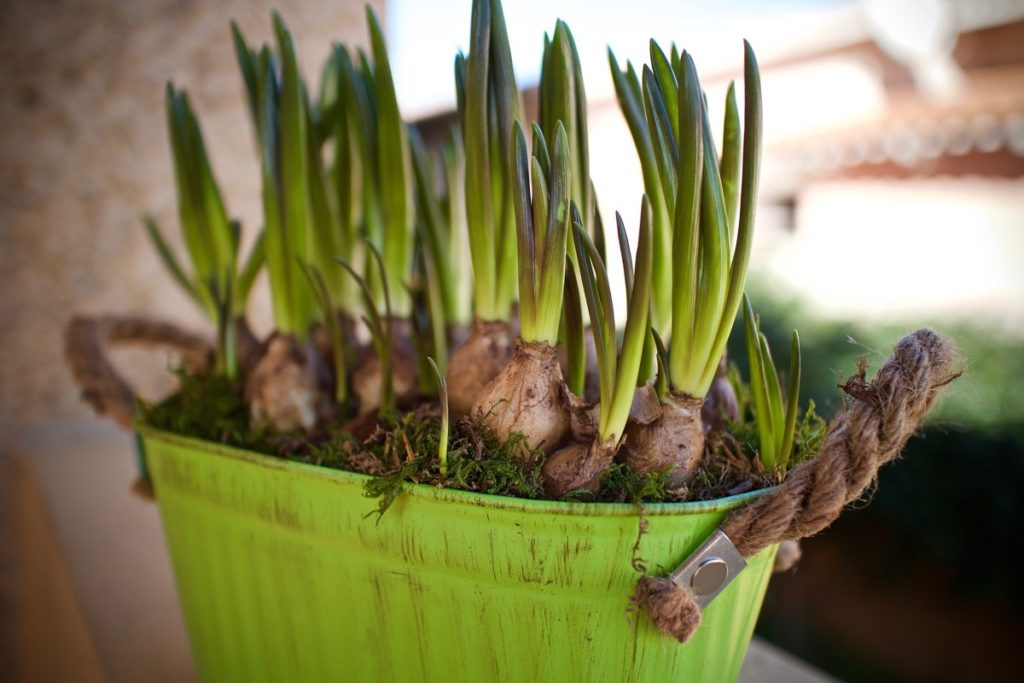
Do Tulips regrow after cutting?
- Deadheading Tulips are always a great idea because it promotes plant growth and helps in rapid reproduction. Deadheading also encourages these plants to bloom next year without any extra effort from your end. If you grow Tulips annually or as perennials in your garden, you should cut them when the flowers are completely colored but unopened. The Tulips continue to grow even after cutting and will open in the vase.
- Autumn bulbs include flowers such as Daffodils, Tulips, and Grape Hyacinth. The best pruning time is after it blooms in the spring. Let the flower fall completely, and the seed pods turn brown. You should cut them once the green leaves start to die back and turn brown.
- Tulips can be pruned almost at any time in their season but leave the plants in place, still attached to the bulb, to generate energy for next year’s blooms. You can cut them in an advanced bud step when the blooms are still closed for extended vase life, but the color of the flower is clear. Cut at least 1/2 inch of the stems at an angle with sharp scissors and place them in water immediately. Flower preservatives are not necessary for Tulips but replace the water daily, creating a fresh cut at the base of the stem.
Planting Tulip bulbs
- It’s best not to overdo the Tulips while planting their bulbs, so you shouldn’t plant more than one bulb in each hole. It’s better to place the bulbs between 4 and 6 inches, so choosing an area with enough room is essential. Different flower bulbs require different depths but place the bulb at three times the bulb’s height. If a bulb is two inches from the tip to the base, you’ll plant it six inches deep.
- Putting more than one bulb in the same hole is not a good idea. There should be one bulb per hole, at a distance between 4 and 6 inches. Planting two to three times the size of the bulb. It’s best to put Tulips in at least 5-inch-deep holes, especially if you plan to leave them in the ground. Planting flower bulbs shallow can expose them to harmful temperature spiking. Putting flower bulbs close to each other can cause the root system to starve due to limited water and nutrition.
Water requirement for growing Tulips from the bulb
- Tulips require very little water. You should only water them well once when planting; you can forget them until spring. The only exception is during periods of drought when you should water the land weekly to keep it moist.
- Tulips will need to be well watered when planting. Soak the soil thoroughly and allow excess water to flow. The water has to be removed from the roots to avoid root rot. To ensure success, plant the bulb during autumn time. You should water your Tulips weekly. Tulips require 2/3 inch of water per week, especially in later winter and early spring, to help the plant prepare flowers. As drought conditions do not exist, Tulips require minimal supplemental watering.
In case you missed it: How to Prepare the Soil for Tulip Plants: Best Soil Mix, pH, and Compost
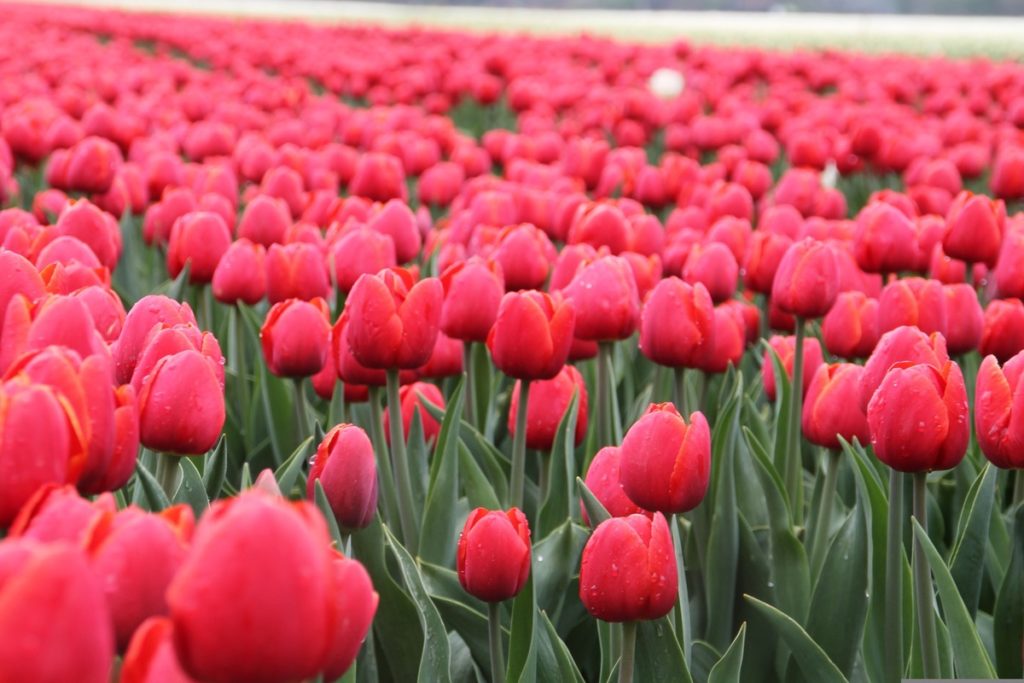
Fertilizer requirement for growing Tulips from the bulb
- You should fertilize Tulips once a year. Autumn is the best time to fertilize Tulips. At present, Tulip bulbs are sent to the roots to prepare for winter, and Tulip bulbs are in the best possible form to take nutrients in the fertilizer. After panting the bulb in the fall, top dress the bed with balanced, 10-10-10 or 10-15-10 slow-release fertilizer. Cultivate the soil lightly to disperse the fertilizer, or water it well. Fertilize the top of the soil instead of the planting hole to avoid burning the bulb.
- Apply 450 grams of 5-10-10 fertilizer to every 50 square feet of the Tulip bed in the spring. Sprinkle the fertilizer between the plants, keep it away from them, then water the bed thoroughly to absorb the fertilizer into the soil. The best type of Tulip bulb fertilizer will have a nutritional ratio of 9-9-6. You should also use a slow-release fertilizer when fertilizing Tulips. This will ensure that nutrients are continuously released into the roots of the Tulip bulb.
Sun requirement for growing Tulips from the bulb
- Tulips prefer a site with full sun. Choose a shaded site or one with only the morning sun, as Tulips don’t like too much heat. Either dry or sandy, the soil must be well-drained, slightly acidic, fertile, and neutral. If possible, plant the bulb in full sunlight. This will help your Tulips achieve their maximum height and flower size. Tulips perform well in the half-day sunshine and also under deciduous trees. In warmer climates, flowers will last longer if protected from the hot afternoon sun.
- Most Tulip bulbs require sunlight to grow well and bloom until their leaves turn yellow and fall. Tulips require full sunlight for the best display, which means at least 6 hours of bright, direct sunlight per day. They also prefer rapidly drying soil and, as a result, make excellent additions to rock gardens.
Why are my potted Tulips dying?
- Poor drainage or overwatered Tulips can lead to fungal diseases such as root rot, destroying the roots and bulbs and causing the plant to wilt. Choose pots with drainage holes; the water only feels dry to touch the upper inch or more of the soil. Potted Tulips can wilt due to health problems due to poor cultural practices.
- Too intense, direct sunlight can also cause them to wilt. Typically, Tulips grow well in full sunlight in cold climates or partial shade in warmer climates. Set the containers in a sunny window inside the house, or continue to water in a bright but safe place outside and as usual. Let the soil dry completely after the leaves wilt and die. Set the pot in a cool, dry place in the basement, garage, or shed.
In case you missed it: How to Grow Rose Plants from Cuttings to Harvest: Planting Guide for Beginners

Why do my Tulips only grow leaves?
The most common reason the bulb does not flower is that it has been planted too shallowly. Most spring flower bulbs, including Tulips, require a cooling period of 8 to 16 weeks to start flower buds inside the bulb. If they don’t achieve this chilling period, the bulbs can sprout, but only the leaves will grow. The most common reason Tulips exit but don’t bloom the environment required for Tulips to bloom each year.
The best soil for Tulips
- Tulips need well-drained soil and grow best in soil with a pH of 6.0 to 6.5. Raised beds, sandy soils amended with organic materials, and slopes offer an advantage in drainage, while heavy or poorly drained soil can cause bulbs to rot.
- Provide the bulb with well-drained, loose, porous soil. In addition to compost, sawdust, peat moss, and other humus-rich substances can improve heavy clay soil. The addition of the same material helps overly sandy soils to retain moisture. Tulips look their best when grown in loose, crumbly soil that is easy to work with and drained very well. The well-drained part is essential. Bulbs can rot in soil that is very wet.
Growing Tulips from bulbs
- You should plant the bulb 6 to 8 inches deep, or about three times the bulb’s height. You should dig a deeper hole to loosen the soil and allow drainage. In clay soil, plant 3 to 6 inches deep instead. Set the bulb with the pointy end in the hole. Cover with soil and press the soil firmly.
- Water bulbs immediately after planting. Although they can’t tolerate wet feet, bulbs need water to trigger growth. If you’re planning on growing perennial Tulips, feed them balanced fertilizer when you plant them in the fall. The bulb is its complete storage system and contains all the nutrients they need for a year. Use organic materials, compost, or balanced time-release bulb food.
In case you missed it: How to Grow Sunflowers from Seed to Harvest: Check How this Planting Guide Helps Beginners
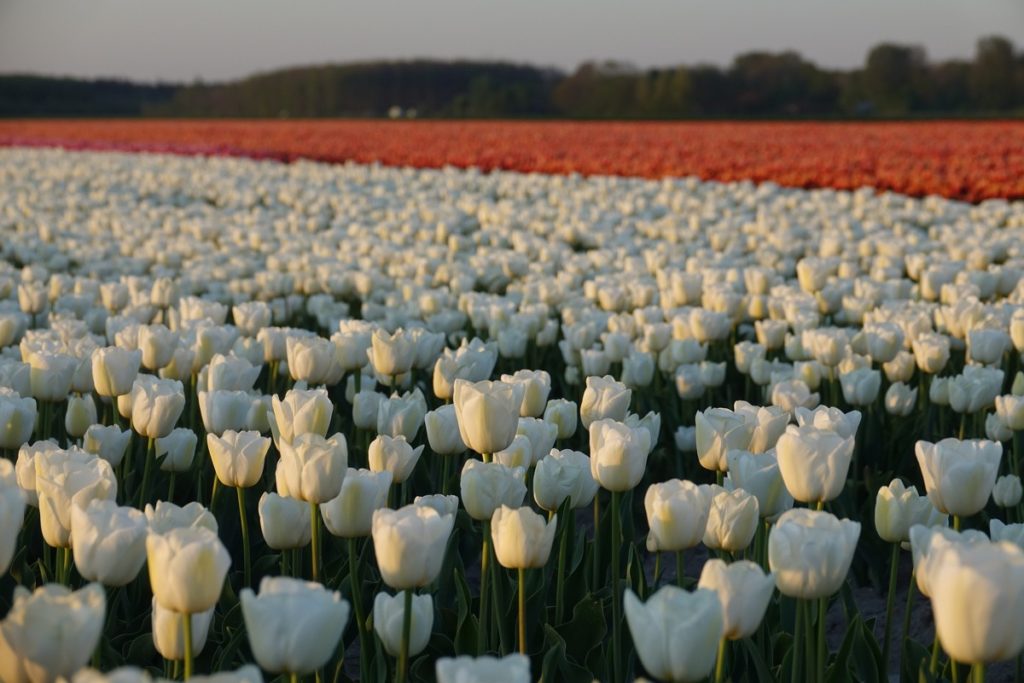
Harvesting Tulip flower
- Tulip flowers blooming times will depend on your location and season, but early Tulips will bloom from March to April, and mid-season types will extend the blooming period later in spring. Tulips can last for 1 to 2 weeks if the weather is cold.
- Gently loosen the soil around the Tulips with a shovel or pitchfork. Gently loosen the soil around the Tulips. With the hand, shake slowly and pull the Tulip, bulb, and all. You should harvest in the morning before the day’s heat. If you want to reuse your Tulip bulbs year after year, cut the flower short about three weeks after the flower blooms. After six to eight weeks, dig the bulb out of the ground and store it. Chill at 4 to 8°C for eight to 10 weeks before replanting.
Conclusion
Tulips are popular flowers that come in a variety of warm colors. They are produced from Tulip seeds or bulbs, and each propagation method has a very different outcome; bulb-grown Tulips will bloom the following spring after planting, while those grown from seeds may take more than two years to flower. Tulips come in various colors and shapes, from rippled Raspberry pink to burnished oranges.
- Gardening Techniques in Planting Vegetables
- Where to Place Indoor Plants in Your Home
- How to Grow Tomatoes Organically at Home: A Comprehensive Guide
- Organic Gardening on a Budget: Low-Cost Methods and Materials
- Gongura Seed Germination and Planting Methods
- Cabbage Seed Germination and Selection
- Broccoli Seed Germination and Selection
- Asparagus Seed Germination and Variety Selection
- Seasonal Flower Gardening: Best Practices for Spring, Summer, Fall, and Winter
- How to Grow Hibiscus from Flower
- Plantation Ideas for Home Decoration: A Beginners Guide
- Flower Garden Designs and Layouts for Beginners
- Planting and Spacing Techniques in Papaya: A Beginner’s Guide
- Growing Gold: Essential Techniques for Planting Pineapples
- How to Make Kalanchoe Plant Bushy: Home Remedies and Solutions
- 11 Reasons Why Your Gardenia is Not Blooming: Home Remedies and Solutions
- Eco Elegance: The Guide to Designing a Drought-Tolerant Landscape
- Gardening on a Slope: Strategies for Hillside Landscaping
- Nourish and Flourish: Top Organic Mulches for Thriving House Plants
- Everything You Want to Know about Indian Mogra Flower: Discover Uses and Growing
- Green Thumb Success: Expert Tips for Cultivating Greenhouse Pumpkins All Year Round
- Maximize Growth & Flavor: The Ultimate Guide to Companion Planting in Herb Gardens
- How to Control Rhododendron Problems Naturally: Home Remedies and Organic Ways to Fix Them
- Natural Magic: The Remarkable Benefits of Cinnamon for Plants
- Best Steps to Revive Dying Tulip with Natural and Organic Treatment
- 10 Reasons Why Your Angel Trumpet is Not Blooming: Remedies and Treatment
- How to Fix Periwinkle Leaf and Flower-Related Problems: Natural Remedies and Solutions
- How to Fix Zinnias Leaf and Flower Problems: Discover Natural and Home Remedies
- Organic Steps to Induce Lemon Tree Flowers: A Comprehensive Guide
- Bloom Booster: Crafting the Perfect Homemade Bougainvillea Fertilizer
- Optimizing Growth: A Guide to Applying NPK Fertilizer for Potted Plants
- 10 Best Homemade Fertilizers for Rubber Plant: DIY Recipes and Application Method
- How to Boost Female Pumpkin Flowers: Effective Steps for More Flowers and High Yields
- Transform Your Indoor Garden: Top Benefits of Pink Salt for Houseplants
- 10 Best Homemade Fertilizers for Peacock Plants (Calathea): Easy DIY Guide
- Unlock Blooms: 9 Reasons Why Your Potted Chrysanthemum is Not Blooming